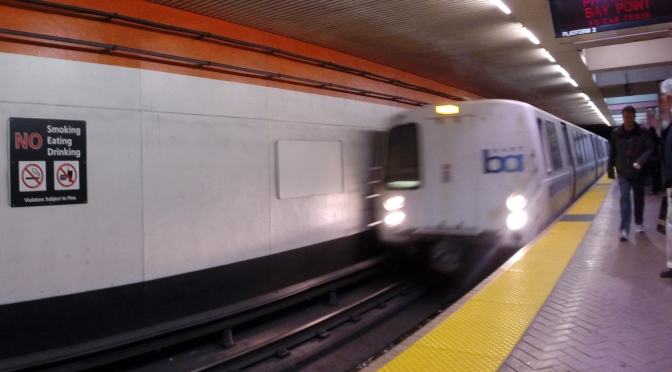Staff Editorial
If there is one thing that many USF students have consistently had concerns about, it is public transportation issues in the metropolitan city of San Francisco. It appears that BART has heard our calls for more transit options after 12:30 a.m. and has begun to roll out tests for later trains. Unfortunately, just adding a few more trains to the schedule gap between midnight and four a.m. is not as easy as one would hope.
On their website, BART has a page dedicated alone to the question of why they are not a 24-hour service, explaining that the four hour window allows for a nightly track maintenance that they cannot do at any other time. When the BART tracks were first built, it was not meant to run during all hours of the night, or even the weekends, so the way it is set up is not like other municipal public transport that allows for maintenance on one track while another is running. As a result, the third-rail power must be shut down completely in order to maintain the upkeep of the tracks.
We, at the Foghorn, believe that as long as safety and maintenance standards are not compromised, late night trains added to BART would be of great service to students and faculty who live and work in the East Bay, or even regular visitors. Outside of the USF community, the benefits go beyond simply not having to check your watch constantly while hanging out with your friends at UC Berkeley.
As the San Francisco Bay Area population continues to increase, so does the demand for public transportation. The implications of BART rising to the occasion could very well add more jobs to the workforce, and even decrease the level of late-night street crime as frequent commuters are left in the dark, after missing their last train of the night. Plans have also been made for expanding AC Transit bus services for passengers who need more reliable late night services across the Bay Area to areas including San Mateo and Fremont.
Yet, it must be noted that, although BART hopes to begin testing for one-year starting this December, it is a plan that has been made before. In 2011, proposals were made and ultimately scrapped, as BART found that nightly maintenance was not feasible unless they cut the 4 a.m. train, and started early morning commutes at 5 a.m. Yet, when they found that it would negatively impact early morning low-income commuters who had to take the four a.m. train to make it to work on time, the plan was set aside until today.
Their solution is to now have two additional trains, thirty minutes apart, with the last train of the night around 1:30 a.m. Maintenance schedules will be adjusted and organized to ensure efficiency and accuracy, while working in a smaller time-frame, but the 26-member committee that has been meeting and planning these changes since June are confident that this rollout will be successful and profitable. We, at the Foghorn, look forward to seeing if they are right!

